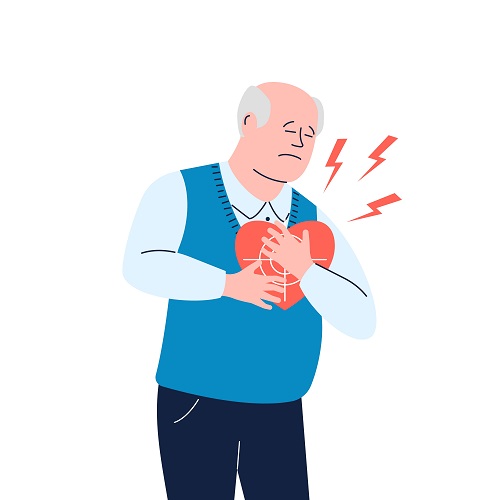Treatment methods vary depending on the location and severity of the condition

September 29th is recognized as 'World Heart Day.' When it comes to heart diseases, many people think of conditions like myocardial infarction and angina. However, another heart disease that is rapidly increasing due to the aging population is valvular heart disease.
The heart has four valves (mitral, aortic, tricuspid, and pulmonary valves). These valves act like automatic doors between the heart and the blood vessels, opening and closing to ensure that blood circulates in the right direction. However, if these valves open and close excessively over time, they can become aged and lose their functionality. This leads to valvular heart disease.
Valvular heart disease is divided into two types: valve stenosis and regurgitation. Valve stenosis occurs when a valve narrows, making it difficult for blood to pass through. Valve regurgitation occurs when a valve doesn't close properly, allowing blood to leak.
Among valvular heart diseases, the most common in adults are mitral valve disease and aortic valve disease. Mitral valve stenosis is when the mitral valve narrows,
while mitral valve regurgitation is when the mitral valve doesn't close properly. Similarly, aortic valve stenosis occurs when the aortic valve narrows, and aortic valve regurgitation occurs when the aortic valve doesn't close properly.
The symptoms of valvular heart disease can vary depending on the location and severity of the condition. The most common symptoms include shortness of breath during physical activity, fatigue, palpitations, and chest pain. In some cases, swelling in the feet and ankles (edema) can also occur.
Professor Shim Ji-young from the Department of Cardiology at Severance Cardiovascular Hospital emphasized that these symptoms may only be readily noticeable with regular physical activity. However, as the disease progresses, individuals may experience shortness of breath even when at rest or lying down. She urged caution and awareness regarding these symptoms.
When valvular heart disease is suspected, the first step in diagnosis is often listening for heart murmurs. Stenosis involving narrowed valves can produce a heart murmur due to increased blood flow velocity through the narrowed valve. Regurgitation, where the valve doesn't close properly, can create a sound of rapid backflow when the valve should be closed. However, diagnosis may be delayed in some cases, and confirmation is then done through echocardiography (heart ultrasound).
The treatment of valvular heart disease can vary depending on the severity of the condition. However, it is clear that if the timing for procedures or surgery is missed, it can be challenging for the heart to recover. Additionally, serious complications such as heart failure, arrhythmias, and strokes can occur.
Professor Cho Sang-ho, a thoracic surgeon at Kangdong Kyung Hee University Hospital, emphasized that regular observation and prescription of medication may be suitable for cases of mild to moderate valvular heart disease. However, if symptoms do not improve with medicines and severe valvular heart disease is confirmed through echocardiography, more proactive treatments such as procedures or surgery should be considered.
Daily management is also essential. Professor Sim Ji-young advises that activities like walking, brisk walking, and light jogging are beneficial for patients with mild symptoms. She also recommends cycling and swimming as they can help strengthen leg muscles, which can be helpful for future surgery or procedures. However, in cases of severe valvular heart disease, strenuous exercise should be avoided, and underlying conditions such as diabetes and high blood pressure, which can accelerate the progression of valvular heart disease, should be closely managed.
Patients who have undergone heart valve surgery require careful postoperative care. Professor Cho Sang-ho stressed that after surgery, patients should pay attention to daily life considerations and other surgery-related factors, including anticoagulation therapy. It is essential to consult with the primary physician, and regular hospital visits for heart health evaluation should be a part of the postoperative routine.
TIP: If you experience these symptoms, consider the possibility of heart valve disease!
※ If two or more of the following apply, consult a cardiologist.
1. Shortness of breath and difficulty breathing.
2. Chest pain or discomfort.
3. Episodes of sudden fainting.
4. Frequent fatigue.
5. Swelling in the feet and ankles.


